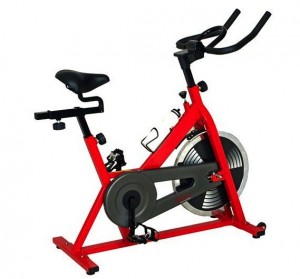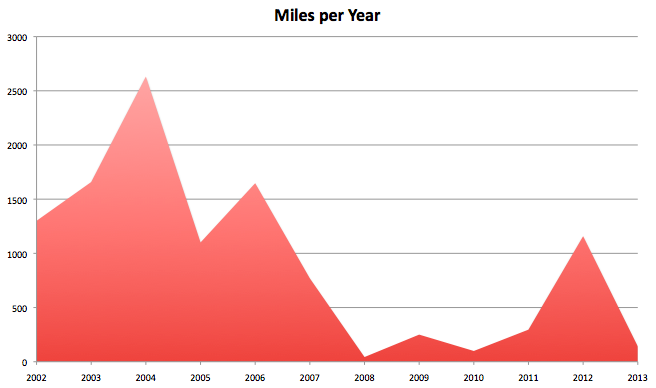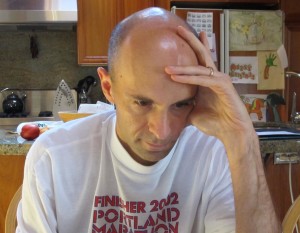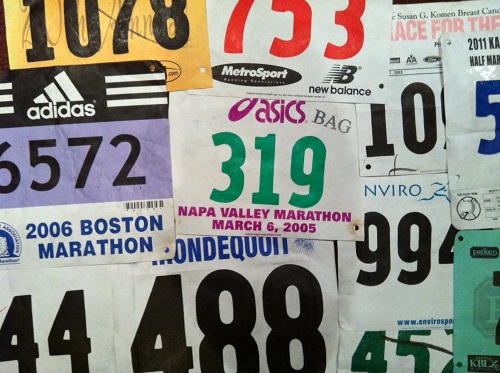
Any good book on running will likely talk about training by heart rate zone. While the exact boundaries and definitions of the zones may differ between sources, the general idea is that exercising while your heart rate is in different zones will provide different benefits and physiological adaptations in your body. Training at 60-70% of maximum heart rate helps you lose weight without being too taxing. Long workouts at 80-90% of max heart rate improve endurance and the body’s ability to cope with accumulating lactate in the blood. Intervals at 90-100% of MHR stress the body’s aerobic capacity, but can be exhausting. This kind of structured exercise based on heart rate zone is the cornerstone of many training plans. This is old news.
What’s new to me is how the mode of exercise figures into this picture. Most runners would probably agree that jogging at 60-70% of max heart rate is fairly easy: they can carry on a conversation without trouble, and maintain that heart rate for over an hour. But for some people, reaching the same heart rate while swimming or cycling may feel much more difficult, or even nearly impossible. Why?
My curiosity on this question grew out of two recent purchases: a home spinning bike and a heart rate monitor. I took the HRM on some runs around the neighborhood, and found that a subjectively “easy” running pace raised my HR into the 140s. In the 150s, the required effort felt moderate, and the boundary where “hard” began was around 160. A short sprint or uphill charge pushed it well into the 170s. For a typical easy run of a few miles, my average HR was 152 or so.
Then I tried the HRM on some spin bike workouts. I’d already been using the spin bike for a few months, setting the resistance so the subjective effort felt similar to my runs. I was stunned to discover that the spin bike barely raised my HR to 100. What?!
I cranked up the resistance, trying to bring my HR to the same 140-150 zone as my easy runs, but the effort required felt extreme. It was like sprinting up a steep hill. My legs turned into blocks of stone, and I couldn’t keep going for more than a couple of minutes. Just for fun (this is fun?) I tried an all-out sprint with the bike at a high resistance setting, and found that I simply couldn’t push my HR beyond 162 on the bike, even as I was gasping for breath and sweating a river. After much experimentation, I finally settled on a resistance level that felt subjectively like a hard run, but still only raised my HR into the 125-130 range.

Explanation Please
What the heck is going on here? Why was the heart rate on the bike so different than the heart rate while running, when working at the same level of perceived effort? And what does the discrepancy say about the best way to combine training for running and cycling?
I did some research, and found that many other people have observed the same discrepancy between running and cycling heart rates, though mine was a bigger difference than most. This discussion mentions a 5% difference or ~10 beats per minute, this triathlon site refers to a 15 bpm difference in max heart rate, and this article talks about the discrepancy at length but doesn’t give any specific numbers. Intriguingly, though, it does mention that the discrepancy appears largest among runners with little cycling experience, and that pro triathletes with lots of cycling and running experience show little discrepancy in heart rate between the two activities.
Unfortunately, I never found any source that gave a really satisfactory answer for the discrepancy, but there are two general theories that come close to an answer when they’re combined. Theory #1 seems to be that fewer muscles are used while cycling vs running, so the demand for oxygen isn’t as high, and the heart doesn’t need to beat as fast. Theory #2 is that the leg muscles of a runner-turned-cyclist are comparatively weak, and it’s ultimately muscle power that limits cycling performance, not aerobic capacity. Taking a step back, these theories could almost be viewed as two sides of the same coin. In essence, they’re both saying that the ability of the heart to pump oxygenated blood to the leg muscles is not what determines the upper limit of cycling performance (and presumably perceived effort). More succinctly: cycling is a strength activity, not an aerobic activity.
Regardless of why the heart rate discrepancy exists, the real question for runner/cyclists is what to do about it. For somebody like me who’s primarily a runner, but uses the spin bike to supplement my training, should I structure the bike workouts to match the heart rate of my runs, or match their perceived effort level? Again, I couldn’t find a really great answer to this question, and the triathlon site was the only source that even partly addressed the question. Their recommendation is to establish a unique max HR for each sport, which will likely be lower for cycling than for running, and then to calculate sport-specific heart rate zones. That’s more-or-less the same as training for the same perceived effort in each sport. In my case and in my present condition, that’s really my only choice anyway, since cycling at a HR of 150+ is too difficult for me to maintain for more than a couple of minutes.
Unfortunately I find this answer vaguely unsettling. If I do a spin bike workout at the same level of perceived effort as my easy runs, and my HR during the workout is only 120, what part of my body am I actually strengthening? Will I get any meaningful aerobic benefit out of it? Or am I just training cycling-specific muscles, which isn’t a goal at all? I’m going to keep digging and see what more I can learn.

 Anyone ages 9 to 90 can get outside and run, but if you’re competitive and enjoy racing, it sure helps to be young. As you age past 40, and the days of setting new personal bests are behind you, what motivates you to keep going? Do your reasons for running change as you get older? And what can an older runner do to stay competitive?
Anyone ages 9 to 90 can get outside and run, but if you’re competitive and enjoy racing, it sure helps to be young. As you age past 40, and the days of setting new personal bests are behind you, what motivates you to keep going? Do your reasons for running change as you get older? And what can an older runner do to stay competitive?

